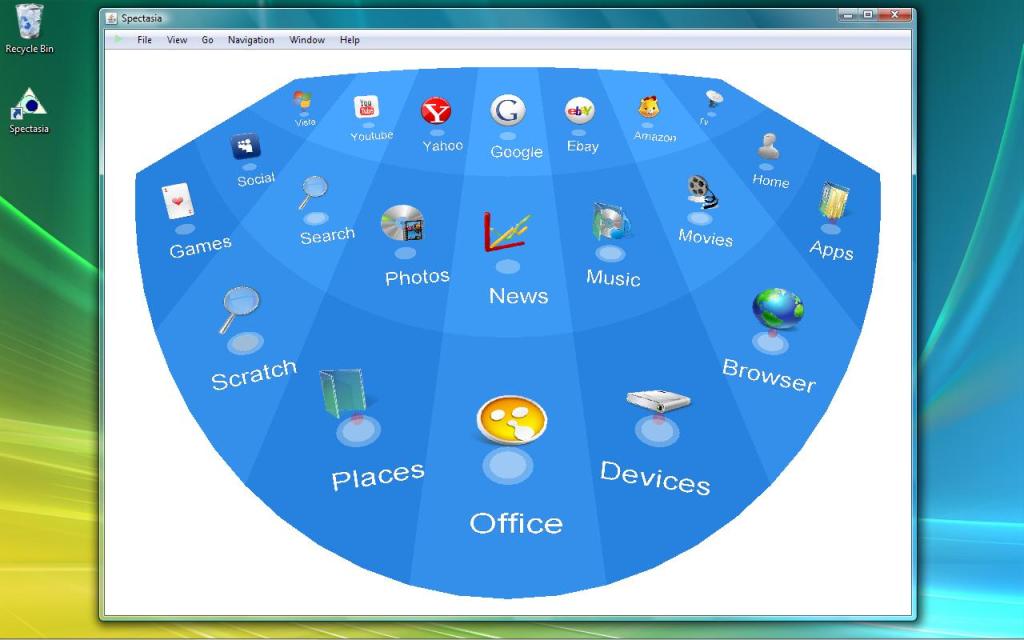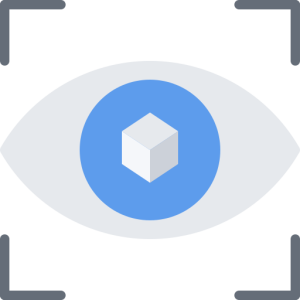Here you will find information about PRC research and development initiatives.
Multi-Perspectival Media
A new philosophy for a multi-perspectival media system has been developed.
Hypergram(s) are data-rich media that may be explored freely or queried in stylised ways; and that can be arranged, rearranged, and linked in multiple ways. Whereby we are developing designs for a practical system. Coding and testing of a prototype is underway, but is not yet complete.
We are exploring several different types of Hypergrams. For example, we embed hypergram-related meta-data directly into the visual data of a stationary/moving image (imperceptibly); or as an alternative, embed meta-data directly into the ‘redundant’ soundtrack of a movie codec.
In sum, we foresee a new class of image, named here as the BAEM image, a type of Hypergram that can transform all types of visual information presentation and exploration capabilities, boosting knowledge visualisation beyond those attainable with ordinary images.
Hypergrams / BAEM Images
We hereby introduce a general-purpose image data-embedding format; named the Branching Ascii Embedded Metadata (BAEM) Image; the same being a type of Hypergram—or performing presentation—which responds to user actions.
Hypergram / BAEM image capabilities:
- ANNOTATION – Text embedding/markup/querying of image, content, and source data; with respect to the information stored imperceptibly inside the image (ostensibly). Said information may include GPS location, camera, and other image-data; and/or content-data mapped to objects, geographic and/or image-space X/Y/Z location(s), or bounded X/Y/Z region(s) of the image-space; allowing labels/notes to be inserted into the image. Hypergram’s can contain volumes of scene or image-related textual markup; wherein queryable annotation(s) provide object, reference, and commentary data.
- LINKAGE – Link embedding/selection/navigation of image, content, and source data; whereby branching-links are stored imperceptibly inside the image (ostensibly). Said links may open-up new viewpoints within present/remote images; or else point to local and/or remote hypermedia; fostering efficient branching operations (ref. viewpoint changes and/or display of object/class/instance data); wherein multiple image/document bundles may be combined to enable interactive exploration.
- EXPLORATION – Viewpoint embedding/selection/navigation of expansive image-world(s); controlled using contextualising-instruments and meters/throttles/steering-wheels. Whereby a single BAEM image can contain multiple windows/viewpoints; with manifold branching-links and configurable geolocation parameters (GPS/station-point/direction-of-look) plus a choice of 2D/3D projection parameters. Multiple images may be: combined, searched, zoomed, panned, scaled, rotated, etc; creating efficient scene overviews, fly-throughs. and rapid pathway navigation.
The essential advantage of a BAEM image is that large amounts of meta-data (typically 10,000 English words) can be located directly within a standard digital image (e.g. PNG, JPEG, or moving image CODEC). As a result, a whole suite of new image-related information queries, linkage, visualisation, and exploration operations are possible.
Hypergram images may be of the following kind:
- Photographs, Object-scans, Movie-frames
- Plans / Designs / Models / Drawings
- Maps, Way-Finding Diagrams, VR Interactive Walkthroughs
- Scientific Images (Telescopic / Microscopic)
- Medical / Satellite Images
- InfoGraphics / Advertisements
- CAD Drawings, Blueprints, and Technical Plans
- Image-bundles, Image-sets, Motion JPEG etc.
- Image Database Search and Image Repositories.
In sum, BAEM images are a type of Hypergram that can transform all types of visual information presentation and exploration capabilities, boosting knowledge visualisation beyond those attainable with ordinary image(s).
KeyMail
KeyMail is a new type of peer-to-peer (P2P) electronic mail system that we have built and tested; whereby KeyMail has significant security, efficiency and speed advantages over central-server based communication protocols.
KeyMail is used to send confidential items directly to colleagues across the Internet—with Absolute Security—and no third-party copies. KeyMail affords the strongest possible encryption protection for your private communications (RSA 4096 / AES 256)— and it meets/exceeds US Government standard for Top-Secret Data.
When you send Sensitive Files to trusted friends using KeyMail, you can be certain that ONLY ONE COPY is created—on the destination computer or USB-Flash-Drive (named Single-Copy-Send or One-To-One Copy). In a nutshell, having no vulnerable ‘third-party’ or ‘Cloud’ copies—of client-data, logins and encryption keys—to attack / steal—means no hacking chances for any and all Threat Actors.
Today many organisations need to safeguard valuable digital products from commercial threats and leaks, or they have a legal requirement to protect client-data privacy. KeyMail employs a comprehensive threat-model; and the resulting security policies are truly world-leading.
New GDPR laws in Europe (and similar/related mandates in the USA)— now place a legal requirement for companies to:
- Protect Access to client data;
- Track copies;
- Manage copies; and
- Defend copies.
KeyMail meets such needs by eliminating all copy exposure and third-party GDPR risks. KeyMail also operates as an Audit-Management and Copy-Tracking system—and created are Delivery Certificates for all payload transactions (locally stored on Sender and Receiver client(s)).

Importantly the KeyMail threat-model is future-proofed; because it does not persist copies of client-data to third-party companies/computers and/or the ‘Cloud’. Nobody, not even the developers—will ever—or can possibly—obtain copies of your private-data, encryption-keys and/or user-details—even for a fraction-of-a-second!
In summary, KeyMail is ideal for partners who regularly share valuable files across WAN Networks; and who wish to avoid data breaches, hacks, threats and leaks.
N.B. The KeyMail project [2013-2018] is now partially mothballed.
Global-Opt
GlobalOpt is all-new optical modelling software. It is for the analytical design of optics; including lenses and cameras. GlobalOpt has breakthrough features for solution discovery.
GlobalOpt [1990-2015] was developed as a full-blown application for windows and Mac systems (approx, 80,000 lines of C/++ and Java code). GlobalOpt has an old website > here.

Spectasia
Spectasia is a design for a new class of 3-D Lookable User Interface which enhances the information visualization and retrieval capabilities of computer users in a wide range of circumstances.
Spectasia [2003-2009] was developed as a full-blown application for windows and Mac systems (approx, 40,000 lines of Java code). Spectasia was featured in major publications worldwide, and had over 80,000 downloads/users in the late 1990s. The Spectasia project is now ‘mothballed’, but still has a detailed Wikipedia page.
Spectasia amplifies the visual search, navigation, and also selection capabilities of users when interacting with digital content. It employs curvilinear perspective, which is similar to an extremely wide-field view of a scene as projected by a fish-eye camera lens. We chose this form of perspective to provide, an exaggerated impression of depth to the user, plus an expanded representational “space”.
Here a large number of objects can be rapidly scanned, and the impression of item location, and 3D or depth, is a very strong one. A key advantage is that users can focus their attention on the precise screen location of desired items with greater accuracy, immediacy, and within a predictable time scale.


Spectasia also employs other presentation mechanisms (ranking along an axis, ranking along a radius, and drilling through icon classes) to allow other attributes of the data space to be examined. Where an array of displayed objects extends beyond the bounds of the display, the projection may be animated or scrolled (laterally or in the orthogonal direction) to simulate optical panning/zooming.
Spectasia is applicable in those situations in which a smooth blending of focus (i.e., projected visual detail) plus context (positional, ordinal and structural relations) is to be maintained during simulated optical zooming and panning operations. The visual objects can be animated under user control to either bring new regions of the hierarchy into view or to bring “distant” objects closer to the viewpoint.

Simple to use on-screen navigation cursors, scroll position indicator displays and level indicators allow the user to navigate, and to efficiently browse, all types of content. Spectasia is applicable in a wide variety of information display scenarios, including hand-held devices, PCs, information kiosks, and shopping terminals. The display area can be finely scaled to achieve efficient utilisation of the span of display elements (or pixels) or to affect rapid field-of-view customisation.
Spectasia is serviceable wherever digital content is to be presented as an array of item choices or where product/item categories are to be browsed and/or navigated. It is applicable to different kinds of display systems, including the 2-D or 3-D stereographic class.

You must be logged in to post a comment.